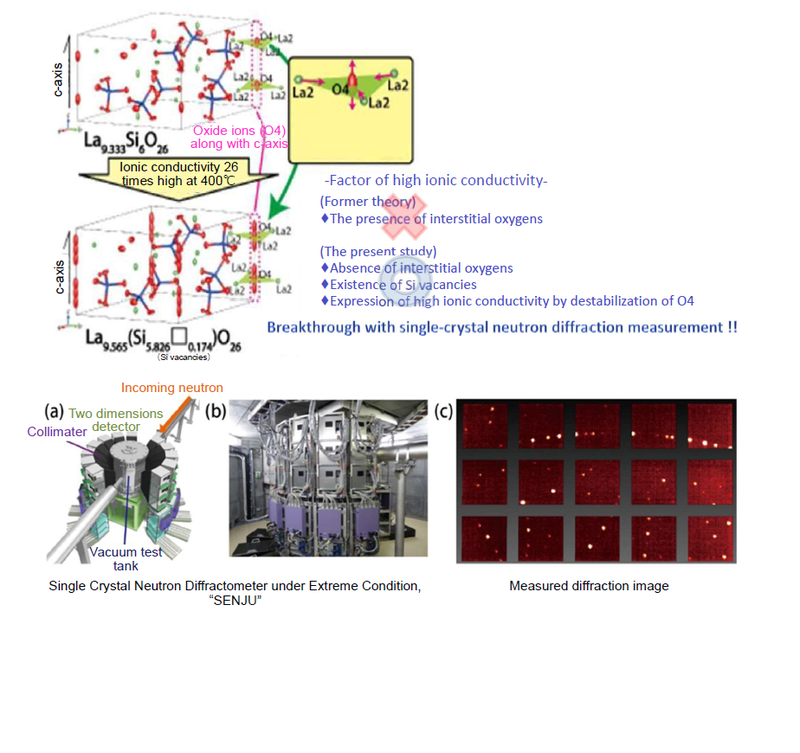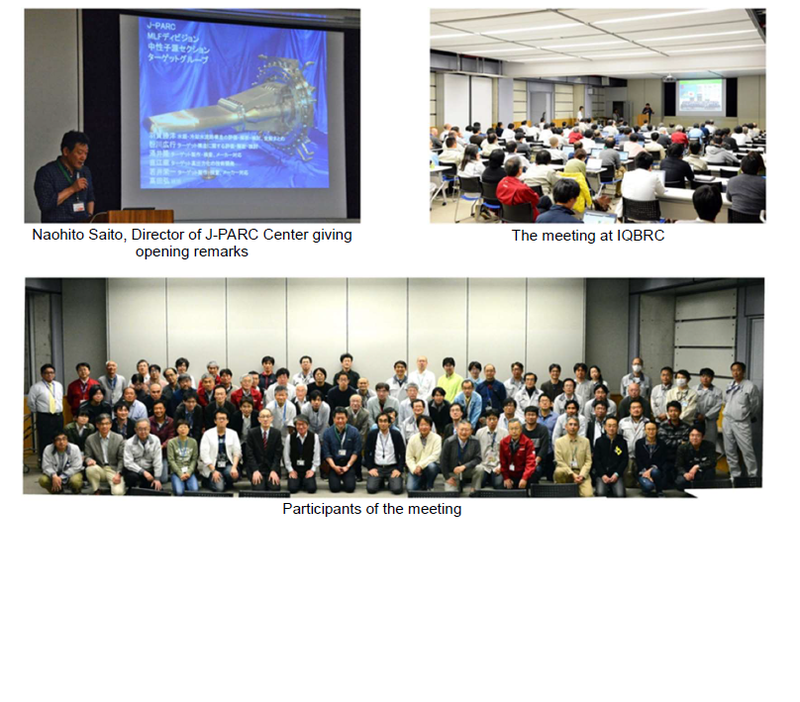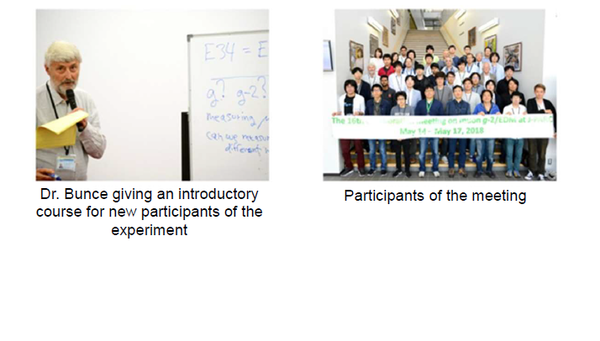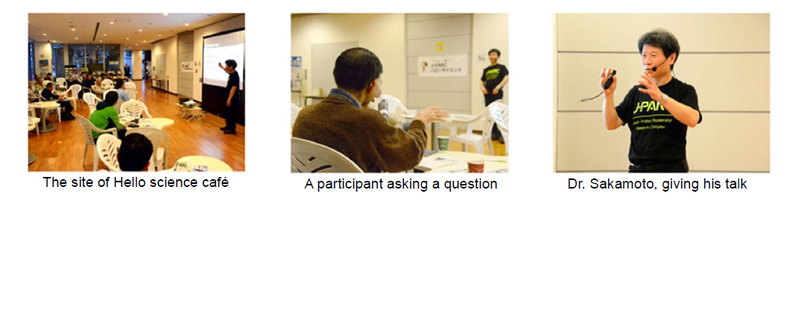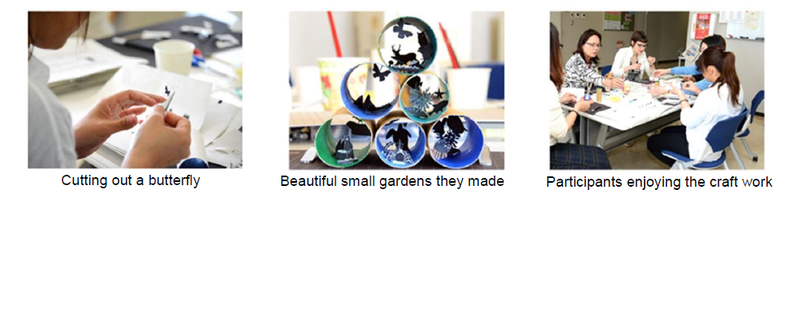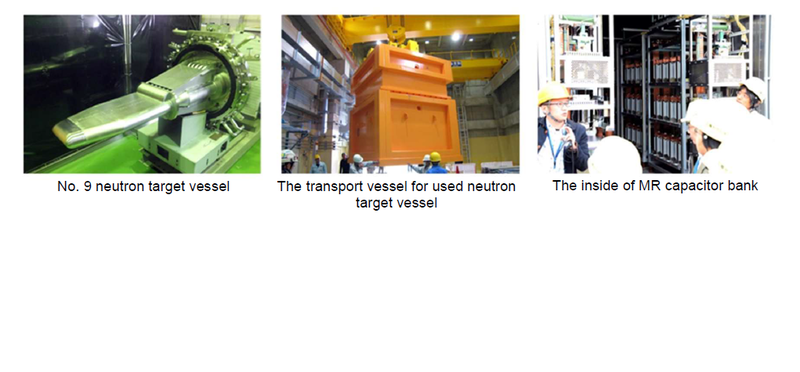J-PARC NEWS May 2018 (Issue #157)
■ Resumed Operation at MLF with Beam Intensity of 500 kW (April 19)
On April 19, the Materials and Life Science Experimental Facility (MLF) shifted to operation with beam intensity boosted from 400 kW to 500 kW. During 500 kW beam operation at the MLF in 2015, operation was temporarily halted due to a problem at the welding point of the water channel for cooling the target protection vessel. Operation continued using a spare vessel for low-output operation, and at the same time, a new target vessel with improved solidity and reliability was finished by reviewing the structure, fabrication method, and inspection technique. Operation with a beam intensity of 300 kW commenced in October of last year, and output was steadily increased while checking soundness of the vessel, until the current output was attained.
■Determination of the Detailed Crystal Structure of Apatite-Type Ion Conductors and Successful Elucidation of Factors Underlying High Ion Conductivity — Using Single-Crystal Neutron and X-Ray Diffraction to Overturn the Previously Accepted Theory of Interstitial Oxygen (April 27, Press Release)
A research group led by Assistant Professor Kotaro Fujii of the Tokyo Institute of Technology has, for the first time, achieved elucidation at the atomic level of factors underlying the high ion conductivity exhibited by apatite-type oxide ion conductors. This was achieved through joint research with Dr. Takashi Ohara (JAEA) of the Neutron Science Section of J-PARC Center and others. By employing X-rays and neutron diffraction* using single crystals, the previously hypothesized presence of interstitial oxygen was refuted, and it was shown that a wide distribution in a specific direction of oxygen present in the lattice is a structural factor for high ion conductivity. This type of ion conductor is a material with potential applications in solid oxide fuel cells, sensors, oxygen separation membranes, and other devices, and is expected to be useful for developing highly safe next-generation energy that is high-efficiency and low-cost. These results were featured in the April 16, 2018 issue of J. Mater. Chem. A, an international journal on material science published by the Royal Society of Chemistry.
*This research used the MLF's "SENJU" Extreme Environment Single Crystal Neutron Diffractometer (BL18).
■On-Site Investigation by J-PARC Interim Evaluation Committee Members (April 25)
On April 25, an on-site investigation of J-PARC was carried out by eight members of the Working Group for High Intensity Proton Accelerator Facility Evaluation*. After receiving an overview of J-PARC from Naohito Saito, Director of the J-PARC Center, the members inspected the various facilities while listening to explanations by each facility manager. They toured the MLF, Neutrino Monitor Building and observation room, Hadron Experimental Hall, Power Supply Building expanded to increase output of the 50 GeV synchrotron (MR), and testing equipment for research on transmutation technologies.
*The Ministry of Education, Culture, Sports, Science and Technology carries out an interim evaluation of J-PARC roughly every five years based on evaluation guidelines for research and development.

■ Held 1st General Meeting of MLF for Fiscal 2018 (April 24, Ibaraki Quantum Beam Research Center (IQBRC))
On April 24, about 100 attendees—including J-PARC Center members involved with the MLF, staff of the Comprehensive Research Organization for Science and Society (CROSS), and persons in charge of experimental instruments from Ibaraki Prefecture—gathered together for a General Meeting of MLF. It was decided to increase the number of meetings starting from this fiscal year in order to facilitate exchange of views and further deepen mutual understanding. At this meeting, the persons in charge of each instrument reported on their respective activities, and there was a lively question-and-answer session. In the general session for exchanging views, the Deputy Head of the Materials and Life Science Division, Kazuya Aizawa, proposed some ideas on changing approaches to work and many frank opinions were expressed.
■Meeting of the T2K Experiment Collaboration (May 8–12, IQBRC)
The T2K experiment is carefully investigating a phenomenon called neutrino oscillation by observing neutrinos, delivered from J-PARC, at the Super-Kamiokande (SK) of the Institute for Cosmic Ray Research, University of Tokyo, located in the town of Kamioka, Gifu Prefecture. This experiment has confirmed, for the first time in the world, the "electron neutrino appearance phenomenon" in which a muon neutrino changes into an electron neutrino. At present, attempts are being made to verify differences in the properties of particles and antiparticles (CP symmetry breaking) by observing differences in the oscillation of neutrinos and antineutrinos. At this collaboration meeting, there was discussion of analysis results incorporating data acquired in and after October 2017. At the opening of the general meeting on the 10th, the Director of the J-PARC Center, Naohito Saito, spoke on topics such as the plan for increasing beam intensity of the 50 GeV synchrotron (MR), and the representative of the T2K experiment, Professor Tsuyoshi Nakaya (Kyoto University) gave some words of encouragement to further the discussion in anticipation of the international conference that will begin in June. At the venue, the neutrino collaborator Dr. Konosuke Iwamoto (the University of Tokyo) was awarded the Frederick Lobkowicz Prize* by the University of Rochester.
*Prize awarded to doctoral students for exceptional experimental or research achievements in fields such as astroparticle physics, high-energy nuclear physics, and high-energy particle physics.
■Held 16th Meeting of the g-2/EDM Collaboration (May 14–17, J-PARC Research Building)
Over four days from May 14, a collaboration meeting was held to promote an experiment (E34), planned by the J-PARC Center, for precisely measuring the anomalous magnetic moment and electric dipole moment of the muon. Sixty international joint researchers from Japan, South Korea, Russia and other countries participated in the meeting, and there were reports on preparations for the experiment and discussion of issues and their solution. The topics of the meeting were: prior experiments at the Brookhaven National Laboratory (U.S.), an introductory talk for new participants by Dr. Bunce, who played a central role in formulating the E34 experiment plan, and a report by Dr. Takayuki Yamazaki of the Muon Science Section on the situation of the Muon Experimental Facility H-line under construction at the Materials and Life Science Experimental Facility.
■J-PARC Hello Science Event "Ultra-Basic Introduction to Elementary Particles — Answering Your Questions Once and for All" (April 27 & 28, Tokai-mura Industry and Information Plaza "iVil" & Tokai Village Library)
The usual monthly science cafe "J-PARC Hello Science" was held from 18:00 on April 27 at iVil, and from 13:30 on the following day (Saturday) at the Tokai Village Library. There were many regulars among the participants, and this time the theme was "Ultra-Basic Introduction to Elementary Particles." To deepen knowledge of elementary particles throughout the group, our science communicator Dr. Sakamoto (J-PARC Center) talked about forces (mutual interactions) he had not mentioned before. As the talk progressed into areas greater depth, the question-and-answer session heated up—as one might expect from the subtitle "answering your questions once and for all"—and he explained points like why particles take on mass, proceeding from basic points to content a step more advanced.
■Paper Craft Work Shop (May 11, KEK Tokai Dormitory)
A paper craft work shop was held at lunchtime on the 11th to coincide with the T2K Experiment Collaboration Meeting. The participants took up the challenge of miniature art, painting the inside of toilet paper tubes, using scissors to cut out pictures such as small printed animals, and then gluing them in place. Staff and researchers from overseas spent an enjoyable time together.
■Facility Updates
(1) At the Materials and Life Science Experimental Facility (MLF), the No. 9 neutron target vessel was completed (photo at left), and stored in the Large Components Handling Room of the MLF. Also, the transport vessel for used neutron target vessels was finished, and on March 22 delivered to the Radioactivated Materials Building (RAM Building) (center photo).
(2) At the 50 GeV synchrotron (MR), Power Supply Buildings No. 4–6 were expanded to achieve a more intense beam. Work is underway to develop a power controller incorporating a high-capacity capacitor bank to suppress power fluctuations into the power transmission network by effectively using the exciting energy of an electromagnet (photo at right).


